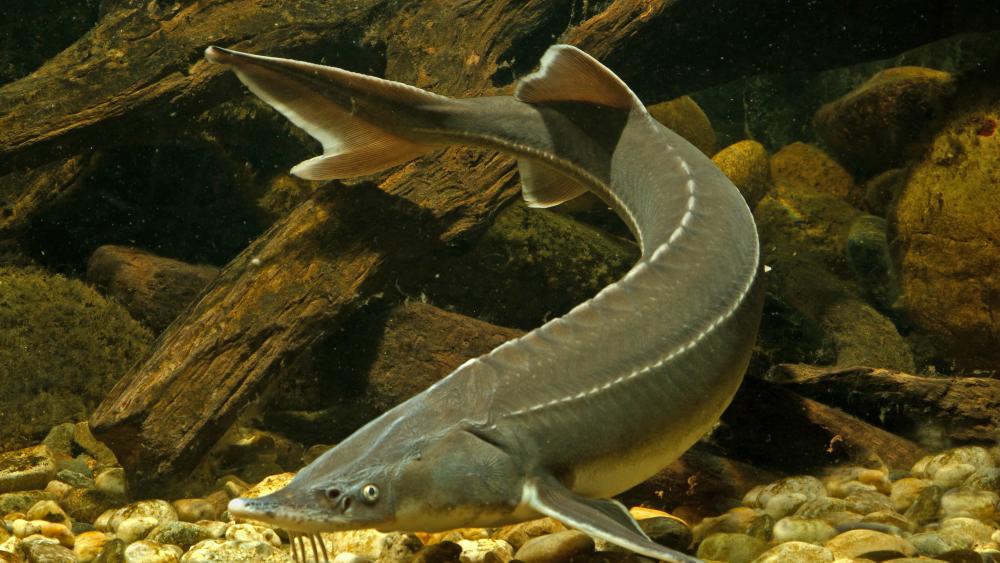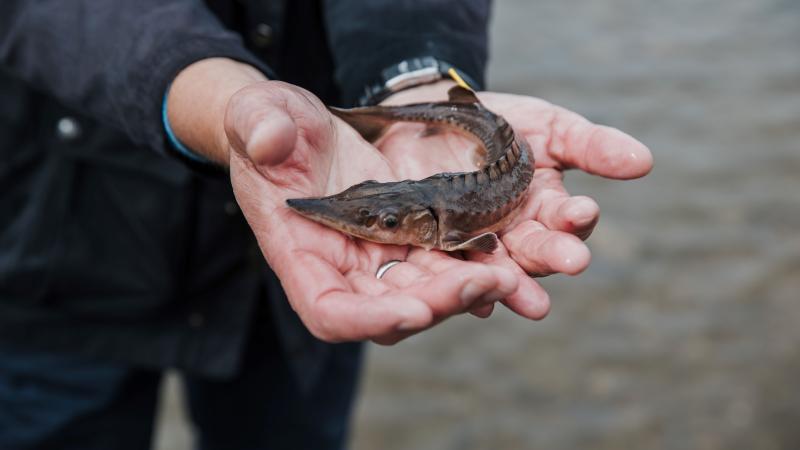
Whether male or female, sexing of sterlet (Acipenser ruthenus) is now easier and more reliable. I Photo: Andreas Hartl
The international search for sex-linked genetic markers in sturgeon has been ongoing for decades. After all, sturgeon cannot be sexed by any external features, and the species have no differentiated sex chromosomes that can be distinguished under the microscope. Genomicist Dr. Heiner Kuhl, first author of the study from IGB, has now made the discovery of a tiny genomic region, specific to female sturgeon. Whole genome sequencing of numerous male and female sterlets – a species of sturgeon – led to this discovery. These analyses were carried out at the French INRAE in the laboratory of Dr. Yann Guiguen.
Scientific breakthrough after decade-long search
The discovery of this genetic element likewise provides evidence of the oldest known sex-determining system in vertebrates with undifferentiated sex chromosomes – evolved ca. 180 million years ago. “It represents a scientific breakthrough. The international hunt for molecular sex markers in sturgeon lasted for decades,” said IGB’s evolutionary biologist Dr. Matthias Stöck, senior author of the study, and adds: “This success was only possible by international collaboration with experts from three European countries, involving genomicists from INRAE in Rennes, France, researchers led by Prof. Dr Manfred Schartl of the University of Würzburg in Germany and Dr. Mitica Ciorpac of the Romanian Danube Institute, DDNI".
Currently, ultrasonic diagnosis or biopsies are used for sexing sturgeon. For ultrasonic sexing to be reliable, however, sturgeons must reach progressed stages of maturation, which can take six to ten years in some species. Biopsies of the gonads are invasive, and stress or even harm the fish. In the future, the newly developed marker will enable scientists to differentiate between males and females simply by using a cotton skin swab to obtain DNA. Furthermore, the reliability of this test even outperforms the previous methods.
Use for species conservation
Many of the 27 sturgeon species occurring worldwide are highly endangered. In sturgeon conservation, the marker will be a good tool for the non-invasive sexing of fish, intended as future broodstock in reintroduction programs. “This enables a targeted selection of candidates for living gene banks, based not only on rare alleles, but also on sex. Fish not selected for broodstock development could then be reintroduced into the wild straight away,” evaluated Dr. Jörn Gessner, co-author of the study and coordinator the reintroduction program for native sturgeon of Germany at IGB.
More efficient aquaculture production of fish and caviar
In aquaculture production, the method could be used in the future for non-invasive early sexing of fish, intended for rearing. Production can then focus on rearing females for caviar and males for meat. As such, the test should by no means lead to the culling of male sturgeons, as the researchers explicitly stress. This ethical aspect is an essential element to be considered. “The next step will involve using the marker to develop a sex-determination test for practical application,” commented IGB researcher Heiner Kuhl, first author of the study.
Open questions about sexual development in the sturgeon
Sexual reproduction is an evolutionarily old feature of life. In vertebrates, sexual development is determined either by environmental triggers or by the genes, or sometimes a combination of the two. Most cold-blooded vertebrates, like fish and amphibians, do not have differentiated sex chromosomes, i.e. a microscopically distinguishable XX/XY system as in mammals or ZW/ZZ system as in birds. Sex chromosomes of many fish and amphibians can only be distinguished at the DNA level. There are several reasons for this: in most cases, a new master gene becomes the initial trigger for sex determination, even an evolutionary change of the sex chromosomes, in closely related species, is possible.
Sturgeons and paddlefish comprise 27 extant species, which branched off from the root of the 31,000 living bony fish around 330 million years ago. In contrast to many other vertebrates, sturgeon evolution is characterised by surprisingly slow changes in the genomes and the morphology. “Conservation of the female-specific sequence across several rounds of polyploidisation – the multiplication of chromosomes in the sturgeon family – representing 180 million years of sturgeon evolution, raises many interesting biological questions,” explained Matthias Stöck. How did the sex locus manage to survive these whole genome duplications? Why has genetic sex determination apparently been conserved in sturgeon, while many other fish species evolved a number of different sex determination systems?
This study was accepted for publication by the Philosophical Transactions of the Royal Society B on 23 October, and will appear in a theme issue on sex chromosome evolution in spring 2021. A preprint is already available online.








